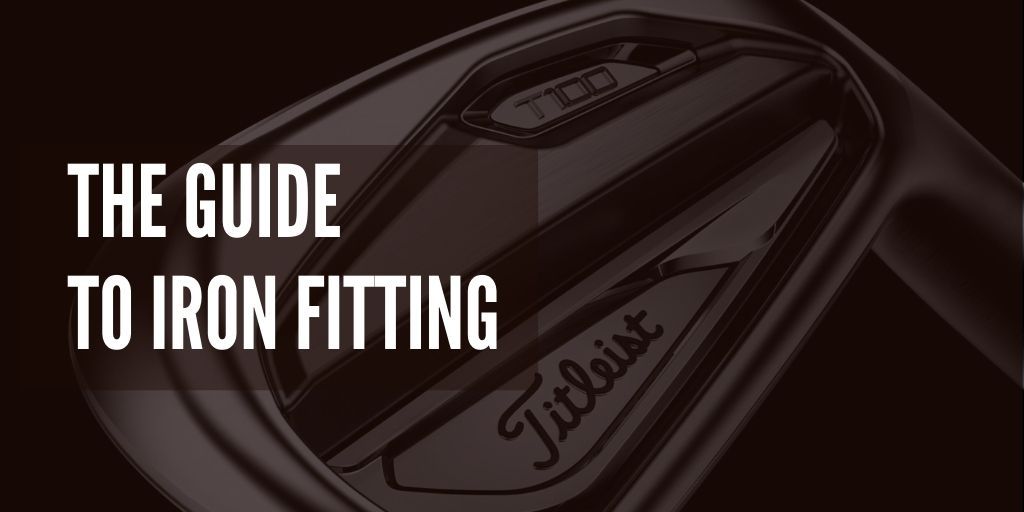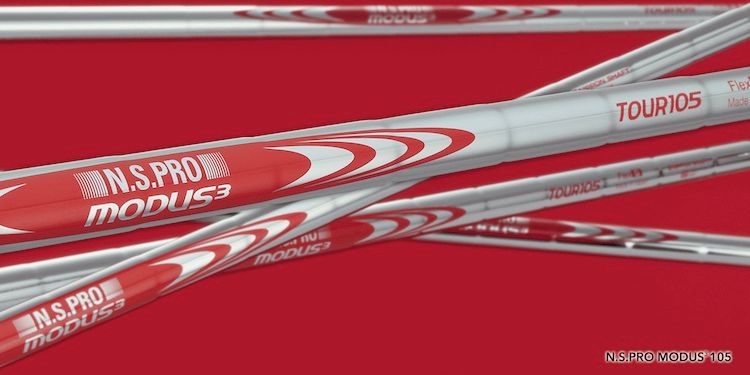
If you’re considering spending upwards of $1,000 or more on new irons, you’re surely (I would hope..) intending to get a proper club fitting. The purpose of this article is to cover not only the basics of what you should expect during an iron fitting but also some of the more detailed criteria that I examine as a Master Trackman Fitter.
Iron fitting 101
The basics of an iron fitting consist of four main criteria. These are things any sporting goods store fitter or Assistant Golf Professional should be able to cover:
Clubhead Type
Irons range from muscle back blades to ultra-game improvement shovels. 95% of the people I fit fall someplace in between. Things that should be considered when choosing a clubhead are forgiveness, workability, launch angle, spin rate, loft, the center of gravity, and offset. Every manufacturer has unique designs in each club to address ball-striking tendencies. If you don't match them up properly to your swing, you are making the game harder for yourself!

Looks matter also, don’t let your fitter discount the look. If you don’t like the way it looks, it’s not the right club for you.
Here are several articles I've done on different iron sets to illustrate several of these points:
Shaft Type
Steel vs. graphite isn’t so much the discussion anymore. It’s more about launch conditions, preference in weight, and feel. I fit a player into 110-gram graphite shafts and the very next player into 80-gram steel shafts two days ago.

The shaft is the golf swing's transmission; it’s how you get your power to the golf ball. Without the right one, you will be losing power, accuracy, and consistency. Choosing the proper shaft is a hugely important part of the fitting process. The shaft will greatly influence the feel of your irons, not to mention the launch, spin, landing angle, and distance of your golf shots.
Also, there are no standards in the golf industry for shafts. One company might call one shaft "stiff," and another might call the same shaft "regular." It's literally the wild west out there. Don't assume if you have X swing speed; you need a certain shaft. There is a lot more nuance to it, which is why you should work with a qualified clubfitter if you can. Getting the weight, flex, and profile right is crucial.
Lie Angle
Lie angle is one of the most important specs to get right in an iron fitting. If it's off, you'll have a much harder time with accuracy and hitting more greens.
Historically, lie angle has been measured by reading divot patterns or using sole tape and a lie board to mark strike point being centered, toe, or heel down. Determining the lie angle is now done more by tracking the strike point on the face and charting dispersion patterns. Some launch monitors like the Foresight GCQuad will show the "delivered lie angle" at impact.

Aaron Dill, Titleist’s PGA Tour Rep for Vokey wedges, famously announced that “lie boards lie,” as in they don’t tell the truth.

Example: I fitted a single-digit player whose main miss is left. While hitting shots off a lie board, he had shown many “toe down” strikes indicating his clubs should be MORE upright. Upright clubs tend to go more left… Bending them upright might give a cleaner divot but would make his misses even further to the left. Not a good move as a fitter. Incidentally, when the face is closed, the toe is lower, the lie board was giving him a false impression of his club’s lie angle at impact.
Shaft Length
Please don’t show me some chart you found online that gives your height or even your wrist to the floor and expect me to take it as holy writ for how long your clubs should be.
Posture, torso height, leg length, wingspan vs. height, flexibility, even age can influence a player’s need for length adjustments.
I’m 6’2” tall. I work with two other guys at the same height. We all have different length clubs. I also work with a guy who is 6’4”; his clubs are shorter than mine. Don’t get me wrong, static measurements are a great place to start, but they won’t tell the whole story. Your fitter should track your strike point, low point, and posture stability throughout the swing to help you find the right length.
Questions You Must Address During Your Next Iron Fitting
Now we’re assuming that the “basics” have been covered to a level of detail that satisfies you. So here are some more vital things to consider.
Are these irons going to improve my flight, forgiveness, consistency?
Most of the time, we get new clubs to shore up or address a specific weakness or shortcoming in our game. So one of the first questions I like to ask is…
“What are you looking to improve with new irons?”
I want to hit it higher. I want to hit it further. I want more workability. I want to mitigate my left miss or my right miss, or simply, I want to be more consistent.
Achieving the client’s goal should become the fitter’s main focus. Maximizing results with these types of goals takes a lot of training and know-how from a fitter. Simply giving someone a Mavrik iron set with 3 degrees of stronger lofts may give a player more distance, but what about height, spin rate, and stopping power?
Properly fitting clubs takes a lot of knowledge. You need to know what shafts can give more height or less spin and which shafts will give a firmer or softer feel but deliver similar launch conditions.
Overall, you want to know what tangible benefits a new set of irons will deliver versus your current set. Sometimes, you don't need new irons. Perhaps you simply need a lie angle adjustment.
Are these clubs going to be built properly for all the shots I like to hit?
This is largely about your preference on how to handle in-between yardages. One of the most important questions I ask during a fitting (usually pretty early on) is how the client likes to handle “tweener” yardages.
Do you prefer the hard 8 or the soft 7? Low single-digit players may answer with, “it depends,” which is fair. I rebut with, “OK, you’re on the 18th hole, center of the fairway. There’s no wind, and the pin is in the center of the green. What gives you the best chance of stuffing the approach and ending the match?”
Obviously, we want the clubs we fit you for to be suitable for the hard or soft shots you’ll undoubtedly face, but I want to hedge the fit towards your specific tendencies. Some iron shafts are better suited for quick tempo players (usually players who like to hit it hard), and some perform better with smoother deliveries. The answer to this question can help steer us into the best bend profile for the client.
How will my new clubs gap into my set?
This is less important if you’re planning to replace wedges at the same time. But even if you aren’t, your fitter should discuss how your gapping will look and what you may need to do to address it moving forward. Sometimes replacing a gap wedge or bending your existing one a degree or two is warranted.
What is the longest iron-like club you want to carry? Consider what club you want to use to hit low punch recovery shots. Consider what club you’d like to be able to hit into the longer par 3’s you play frequently. I say iron-like club because utilizing utility irons at the top of the set is something I’m doing in well over 50% of my fittings these days. Callaway, Taylormade, Ping, Titleist, Mizuno, Cobra, and Srixon are all offering utility irons that offer some very beneficial performance characteristics when compared to traditional long irons.
Does it make sense to “Stretch the Fingers” in the long irons? Think about your gapping in the longer clubs in your set. I often bump into guys (often in their 40’s 50’s and 60’s) who report hitting their 4, 5, & even 6 iron only about 5 yards difference in distance. These unfavorable results come from a combination of misfit (or no longer properly fit) shafts, improper lie angle, and 3-degree loft gaps between clubs).
We care about the protection of your data Read our Privacy Policy